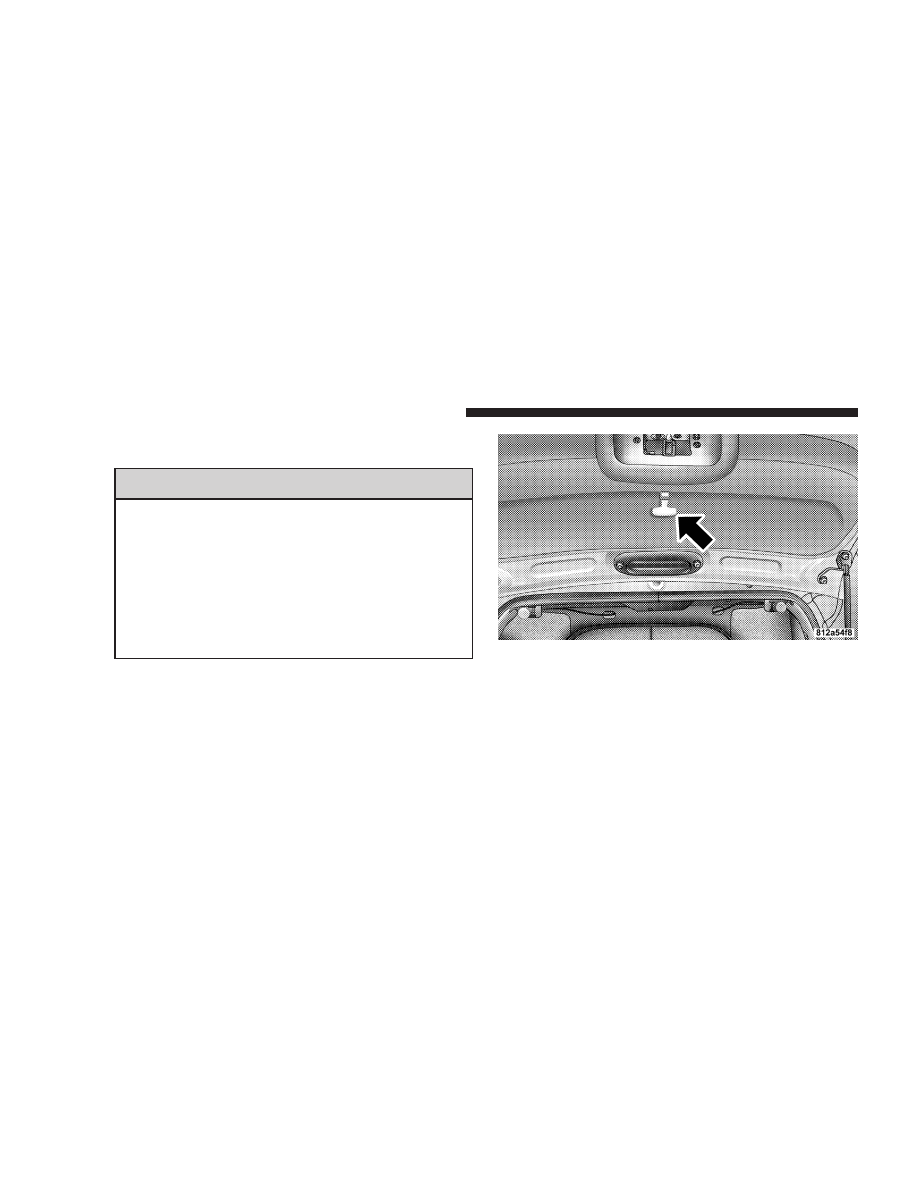Chrysler PT Cruiser Convertible (2005 year). Manual - part 2

EMERGENCY DECK LID RELEASE LATCH
WARNING!
Do not allow children to have access to the trunk,
either by climbing into the trunk from outside, or
through the inside of the vehicle. Always close the
deck lid when your vehicle is unattended. Once in
the trunk, young children may not be able to escape,
even if they entered through the rear seat. If trapped
in the trunk, children can die from suffocation or
heat stroke.
As a security measure, an emergency deck lid release
lever is built into the deck lid latching mechanism. In the
event of an individual being locked inside the trunk, the
trunk can be simply opened by pulling on the glow-in-
the-dark lever attached to the deck lid latching mecha-
nism. See following picture.
POWER WINDOWS
The power window switches are located on the instru-
ment panel above the A/C controls. The top left switch
controls the left front window and the top right switch
controls the right front window.
Emergency Deck Lid Release Handle
28
THINGS TO KNOW BEFORE STARTING YOUR VEHICLE